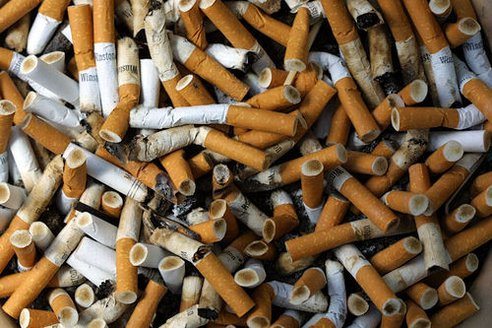Future Supercapacitors Could Be Made from Discarded Cigarette Butts
Bohs Hansen / 10 years ago

Cigarettes are often burned down to their filters by smokers looking to enjoy every last bit of their expensive tobacco. But then those butts are just tossed away, contributing what’s often estimated as being as many as 5.6 trillion used cigarettes to our trash heaps every year.
A group of researchers from Korea decided to keep the burning process alive by applying heat to the filters themselves. This creates a material that improves supercapacitors, devices that hold electrical charges and are capable of releasing those charges in instantaneous bursts like the flash on a camera.
Supercapacitors are currently found in computers, but as they get better and smaller, the possibility exists that they will find their way into all our electronics. And yes, that means that one day, your smartphone could have recycled butts in it.
Prpfessor Jongheop Yi and his team from Seoul National University collected cigarette butts from a variety of brands. They then used a process known as pyrolysis, a form of combustion that takes place in an oxygen free environment, to heat the butts to a very high level. The cellulose in the filters are turned into carbon-based material that was better at storing energy than the types of carbon, graphene and carbon nanotubes currently used in supercapacitors.
“A combination of different pore sizes ensures that the material has high power densities, which is an essential property in a supercapacitor for the fast charging and discharging,” said Yi, co-author of the study just published in the journal Nanotechnology.
The secret to the success of the new material, which is known as nitrogen doped (N-doped) meso-/microporous hybrid carbon material (NCF), is that it has on its surface large and small pores, both of which are critical to the functioning of the electrodes in a supercapacitor. The large pores allow ions to move between the plates that comprise the supercapacitor, while the smaller ones increase the material’s surface area. This in return increases the material’s capacitance, or its ability to store a charge.
“Numerous countries are developing strict regulations to avoid the trillions of toxic and nonbiodegradable used cigarette filters that are disposed of into the environment each year,” Yi said. “Our method is just one way of achieving this.”
While the cellulose acetate in cigarette butts makes for good source material for supercapacitors, the butts themselves make for a particularly lousy form of litter, as they can take up to 12 years to decompose, can leach harmful chemicals into the environment, and can even end up in the digestive tracks of marine and land-based mammals. So Yi’s research could really solve two problems at once, making better electronics and reusing a material that accounts for one-third of the roadside litter.
Thank you R&Dmag for providing us with this information.
Images courtesy of Treehugger.



















